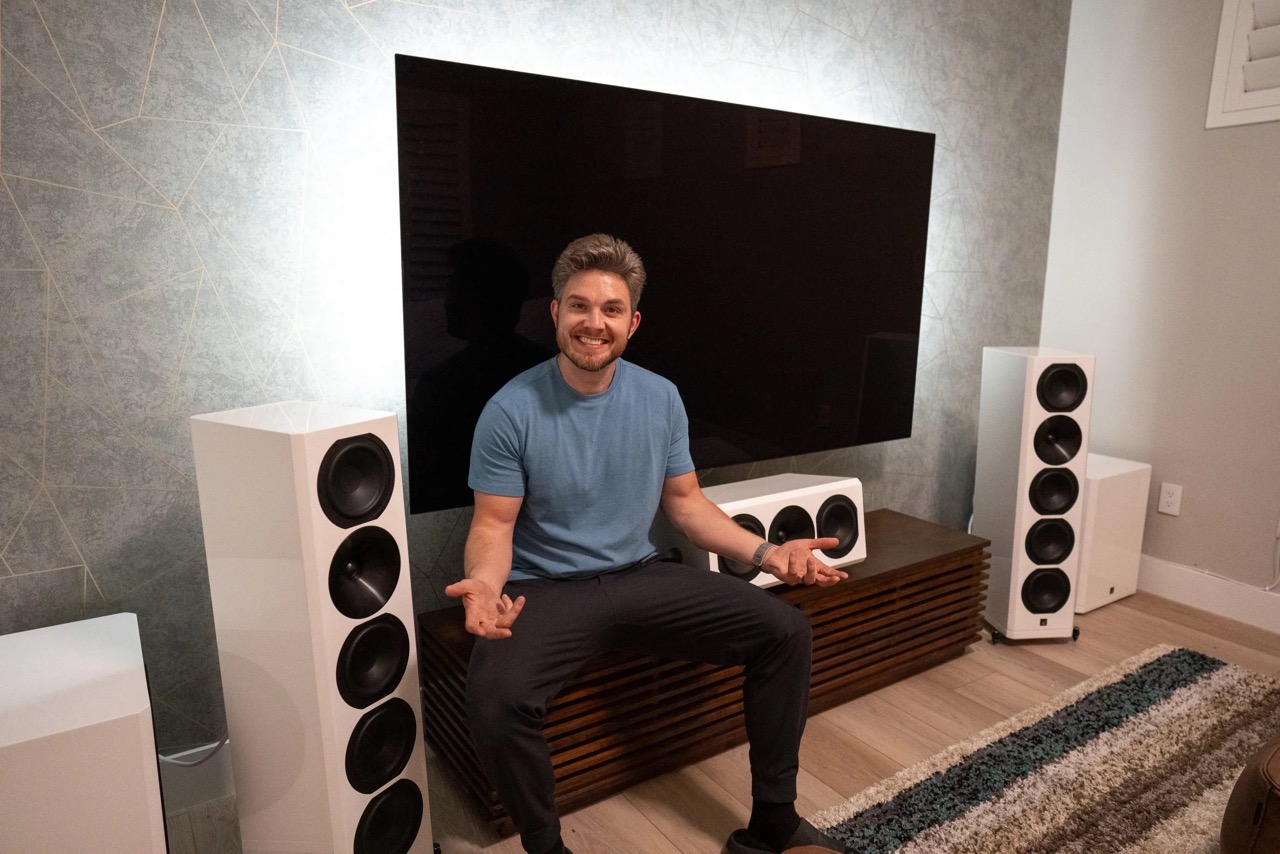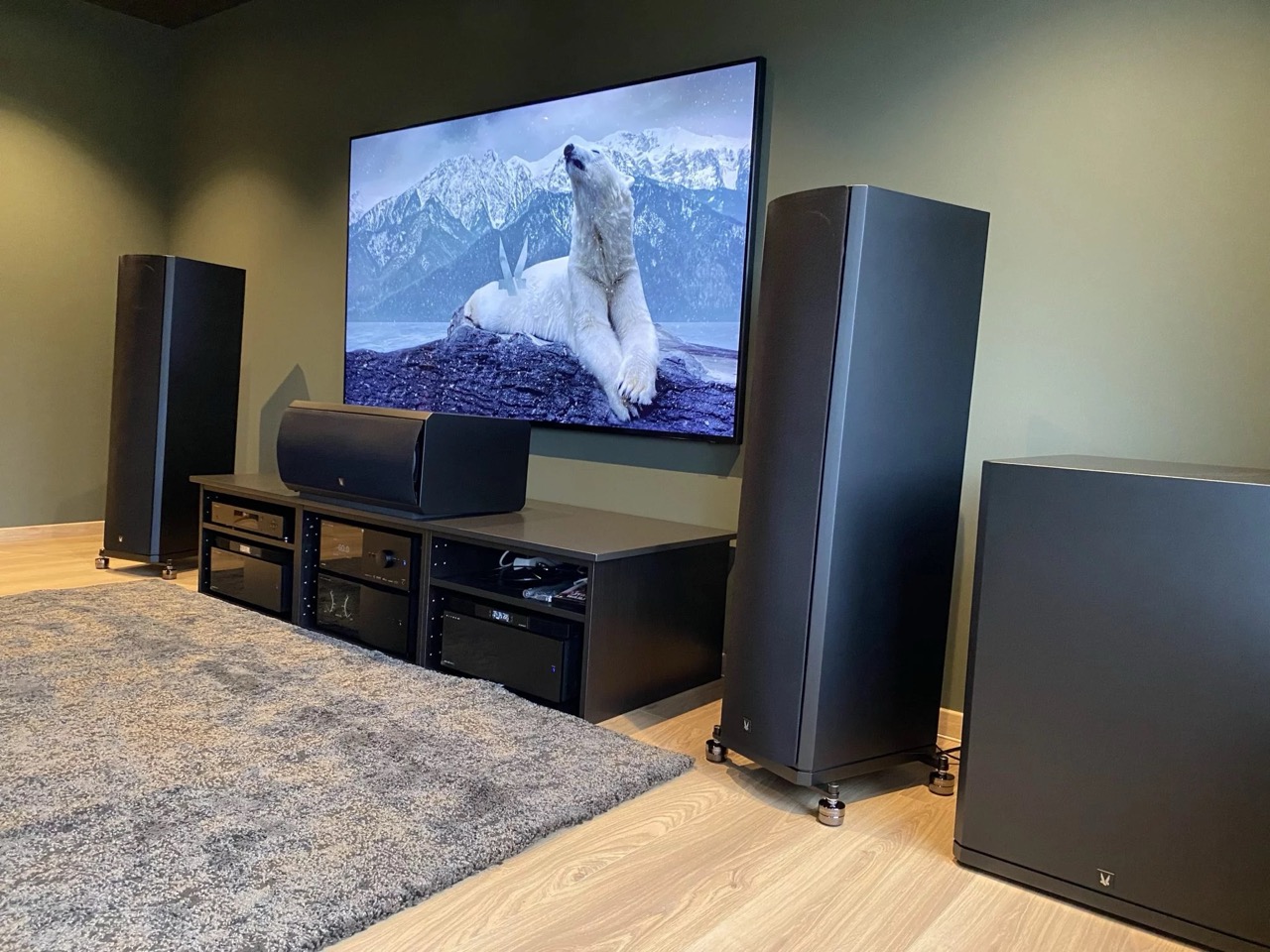Insulation and Drywall Tips for Home Theater Construction
Article summary
- Insulation is key for sound control and thermal comfort in home theaters.
- Choosing the right material (fiberglass, mineral wool, foam) affects performance and budget.
- R-value is crucial; higher values mean better heat resistance and energy savings.
- Proper installation techniques, like using resilient channels and acoustic sealants, enhance soundproofing.
- Upgrade your audio experience with the 1723 Tower THX for cinematic sound quality.
Understanding Insulation in Home Theaters
When creating your home cinema, one of the most critical aspects to consider is insulation. Proper insulation is key to controlling sound within the home theater room, ensuring that the audio from your movies doesn’t disturb the rest of your household and, equally, that outside noise does not interrupt your viewing experience. It’s not just about soundproofing; insulation also plays a significant role in thermal control, keeping your space cozy in winter and cool in summer, which is essential for comfort during long movie marathons.
There are various types of insulation materials available, including fiberglass, mineral wool (rockwool), and foam sprays. Each has its own set of advantages in terms of sound absorption, fire resistance, and thermal properties. Selecting the right insulation material for your home theater will hinge on balancing these benefits with your specific needs and budget.
Beyond the type of insulation, it’s crucial to consider the R-value, which measures the material’s resistance to heat flow. The higher the R-value, the better the insulation’s effectiveness at keeping heat from entering or leaving your home theater. This measure contributes to energy efficiency and can help in saving on heating and cooling costs.
Proper Installation Techniques
Once you’ve selected the right insulation for your home theater, proper installation is the next step. It’s vital to ensure no gaps or spaces through which sound or air can easily pass. This might involve cutting insulation to fit odd spaces or making sure that it fills the cavity between walls and ceilings completely.
For the best soundproofing, it’s often recommended to use resilient channel, or sound isolation clips, and hat channel systems in conjunction with insulation. These are used to mechanically separate the drywall from the studs, which diminishes the transmission of sound vibrations through the structure of your home.
Another technique to enhance sound dampening is to stagger the seams where the sheets of insulation meet, which helps to break up sound waves. Additionally, sealing all seams with acoustic sealant can prevent sound leaks—this includes paying attention to areas around electrical outlets, light fixtures, and door frames.
Choosing the Right Drywall
The type of drywall you select for your home cinema can significantly impact sound quality as well as aesthetics. Standard drywall is often used, but for a home theater, denser options such as Type X or soundproof drywall are preferred. These have enhanced mass that helps to block sound transmission between rooms. Keep in mind that these drywall panels are heavier and may require more than one person for installation.
In addition to the type of drywall, thickness also plays a part. Thicker drywall has better sound attenuation qualities. Typically, ⅝-inch drywall is recommended for home theaters as opposed to the standard ½-inch thickness. Layering drywall, with layers of Green Glue noise-proofing compound in between, can also greatly improve the soundproofing of your space.
When installing drywall, it’s essential to optimize seam placement to reduce areas where sound can leak through. It’s also recommended to use acoustical caulk for joints and edges to further enhance sound isolation. Secure attachment to the framing with the right screws and correct spacing is also critical to prevent any sagging or loosening over time.
Frequently asked questions
What is the importance of insulation in home theaters?
Insulation in home theaters is crucial for controlling sound, preventing audio disturbances, and ensuring thermal comfort during long movie sessions.
What types of insulation materials are best for home theaters?
Common insulation materials include fiberglass, mineral wool (rockwool), and foam sprays, each offering unique benefits in sound absorption, fire resistance, and thermal properties.
What is R-value and why does it matter for home theater insulation?
The R-value measures insulation's resistance to heat flow; a higher R-value indicates better energy efficiency, which helps save on heating and cooling costs.
How should I install insulation in my home theater?
Proper installation involves ensuring no gaps for sound or air pass-through, using resilient channels or sound isolation clips, and sealing all seams with acoustic sealant.
What drywall type is best for soundproofing in home theaters?
For home theaters, denser options like Type X or soundproof drywall are recommended due to their enhanced mass, which helps block sound transmission.
How thick should drywall be for optimal sound quality in a home theater?
A thickness of ⅝-inch drywall is recommended over the standard ½-inch for better sound attenuation in home theaters.
What techniques can improve soundproofing when installing drywall?
Optimize seam placement, use acoustical caulk for joints, and secure drywall properly to prevent sagging and sound leaks.
What additional materials can help with soundproofing in home theaters?
Using layers of drywall with noise-proofing compounds like Green Glue can significantly enhance sound isolation in your theater.








